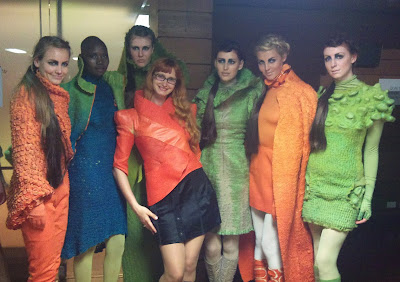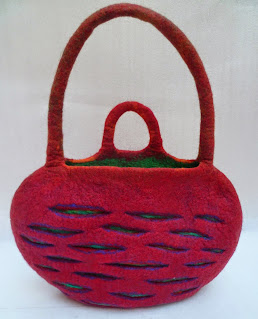Estudió Fashion Design en University of Technology, Sydney y ha experimentado con diferentes materiales textiles y el fieltro es uno de ellos.La verdad que más que hablar de ella hay que ver su producción que para mi es increíblemente creativa y audaz.
Ella misma se describe como multifacética , cambia su humor, sus lugares , sus actividades. Desteta el aburrimiento, la simpleza la aburre, por eso tiende a complejizar sus diseños. Todo esto realmente se ve en su obra
Hace un tiempo que vengo dando el curso de shibori y este es un ejemplo de las posibilidades que tiene esta técnica de amarres utilizada también para generar diseños con teñidos.
Tatiana junto a una de las modelos al finalizar el fesfile





















